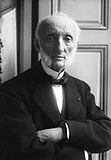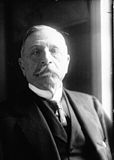French legislative election, 1902
|
|
|||||||||||||||||||||||||||||||||||||||||
|---|---|---|---|---|---|---|---|---|---|---|---|---|---|---|---|---|---|---|---|---|---|---|---|---|---|---|---|---|---|---|---|---|---|---|---|---|---|---|---|---|---|
|
|||||||||||||||||||||||||||||||||||||||||
|
All 585 seats to the Chamber of Deputies |
|||||||||||||||||||||||||||||||||||||||||
|
|||||||||||||||||||||||||||||||||||||||||

Composition of the Chamber of Deputies
|
|||||||||||||||||||||||||||||||||||||||||
|
|||||||||||||||||||||||||||||||||||||||||
Pierre Waldeck-Rousseau
Democratic Republican Alliance
Émile Combes
Radical-Socialist Party
Legislative elections were held in France on 27 April and 11 May 1902.
These elections were a victory for the Bloc des gauches alliance between Socialists, Radicals, and the left wing of the Republicans, over the anti-Dreyfusard right wing of the Republicans, the progressistes. The Bloc des gauches had been brought together to support the "Republican Defense Cabinet" (gouvernement de défense républicaine) formed by Pierre Waldeck-Rousseau following the assault on the newly elected President, Émile Loubet, on the Longchamp Racecourse on 4 June 1899, during the Dreyfus affair.
However, Waldeck-Rousseau's own supporters (the ARD) took few seats in the election compared to the Radicals and Socialists. After the election, President Loubet invited the Radical Émile Combes to form a government, which lasted until January 1905, when the Socialists withdrew from the Bloc des gauches.
...
Wikipedia



